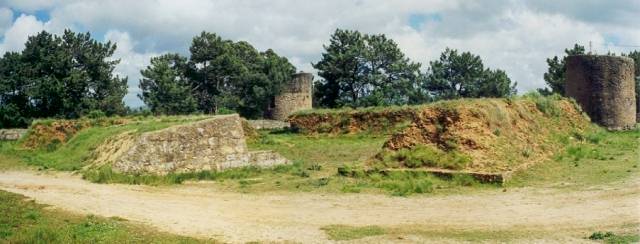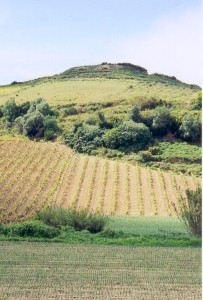
Above: The powder rooms at Fort São Vicente, Torres Vedras. Work to construct São Vicente began as early as 8th November 1809. From its commanding position outside the town of Torres Vedras it guarded the main road south from Leiria to Lisbon. In October 1809, Wellington ensured the lasting presence of the British Army on the Iberian Peninsula by ordering the construction of two defensive lines of trenches and redoubts, 20-40km north of Lisbon, stretching from the Atlantic to the Tagus (Tejo). Between November 1809 and September 1810, the Lines of Torres Vedras were crafted out of two successive ridges of hills by local labour working under the supervision of British engineers. Mutually-supporting closed earthworks, mostly small redoubts holding 3-6 guns and 200-300 men, were sited along the high ground of each ridge. Buildings, sunken lanes, olive groves and vineyards were all erased from the landscape, denying any cover to an attacking force. Rivers and streams were dammed to flood the ground below the hills. Sections of hillside were cut or blasted away to leave small but sheer precipices. Ravines and gullies were blocked by entanglements. All this was accomplished without word of it reaching the French.
Two weeks after Buçaco, Masséna's advance ground to a halt in front of the First Line. Pelet, Masséna's senior aide-de-camp, is quoted by Oman to have remarked: "On arriving at Sobral, instead of the "undulating accessible plateaux" that we had been told to expect, we saw steeply scarped mountains and deep ravines, a road-passage only a few paces broad, and on each side walls of rock crowned with everything that could be accomplished in the way of field fortifications garnished with artillery; then at last it was plainly demonstrated to us that we could not attack the Lines of Montechique with the 35,000 or 36,000 men that still remained of the army. For, even if we had forced some point of the Lines, we should not have had enough men left to seize and occupy Lisbon." One month after the failure of a single probing attack at Sobral on 14th October, Masséna withdrew more than 40km to a position between Santarém and Rio Maior. The British Army in Portugal was secure. "The Lines of Torres Vedras" by A. H. Norris and R. W. Bremner, published by the British Historical Society of Portugal 1980. "Wellington in the Peninsula 1808-1814" by Jac Weller, published by Greenhill Books 1992, ISBN 1853671274. "A History of the Peninsular War", Volume III, by Sir Charles Oman, published by Greenhill Books 1996, ISBN1853672238. Detailed map of the Lines of Torres Vedras courtesy of The Napoleon Series. © Andrew C Jackson 2000-2001
|

